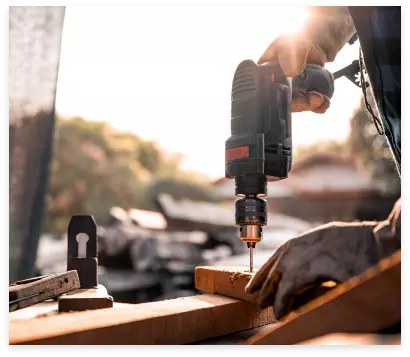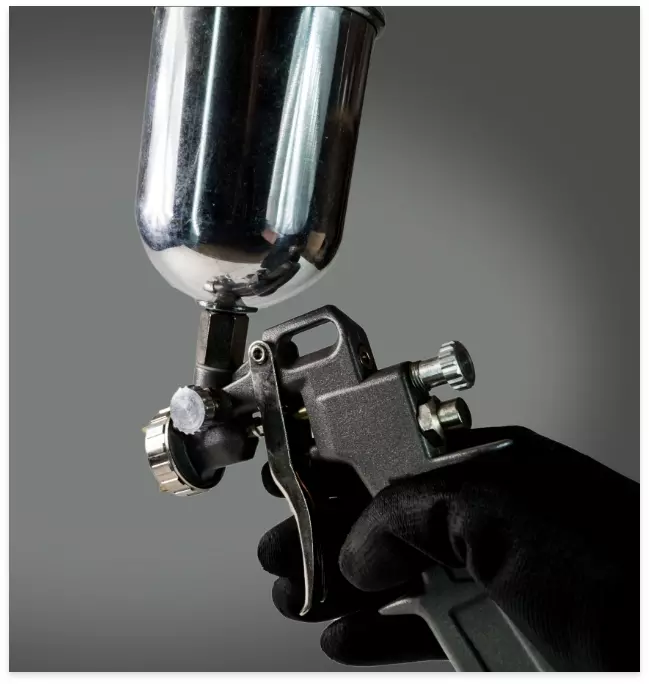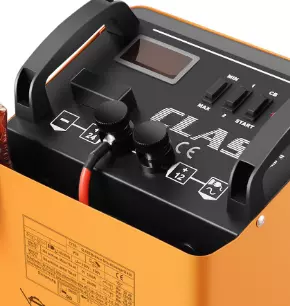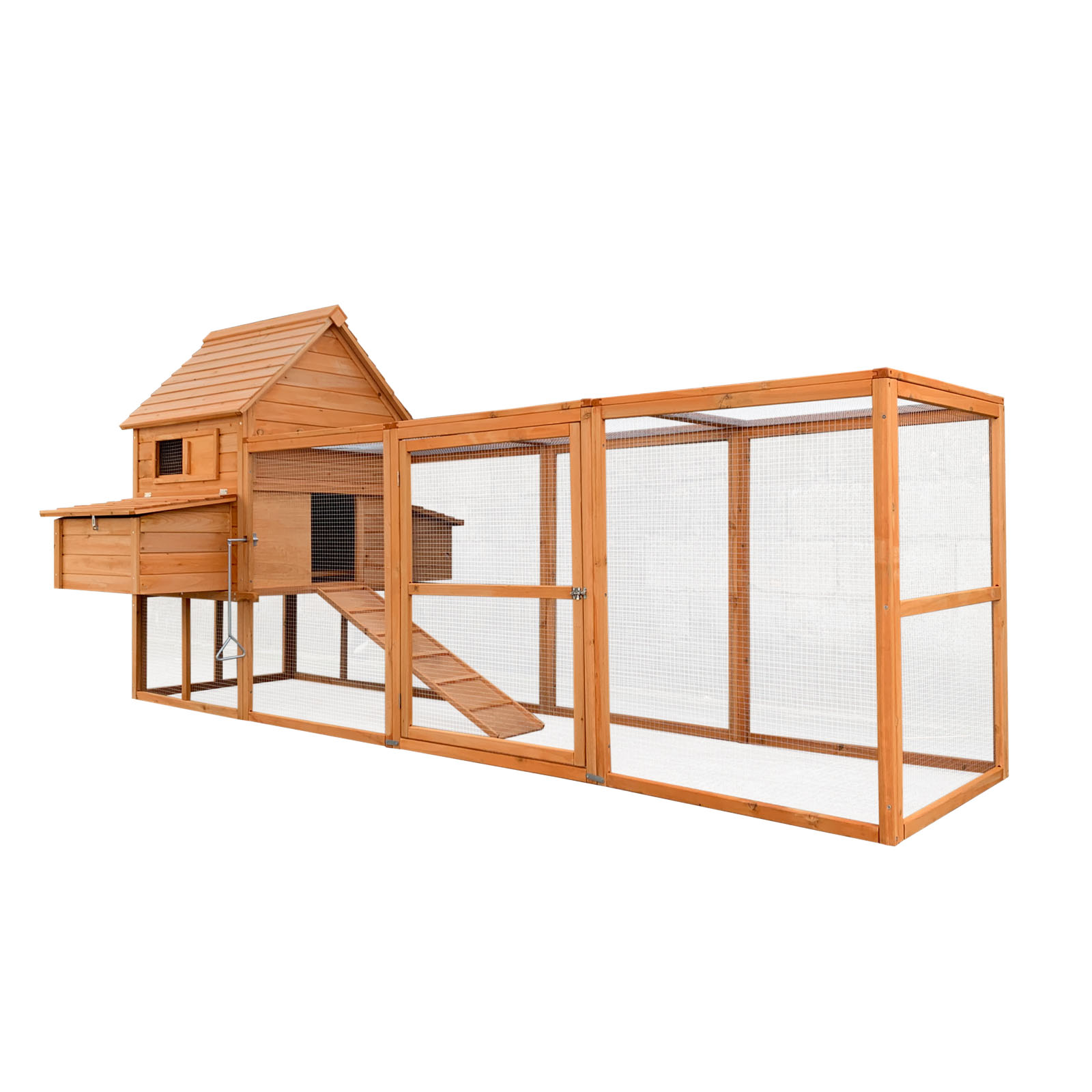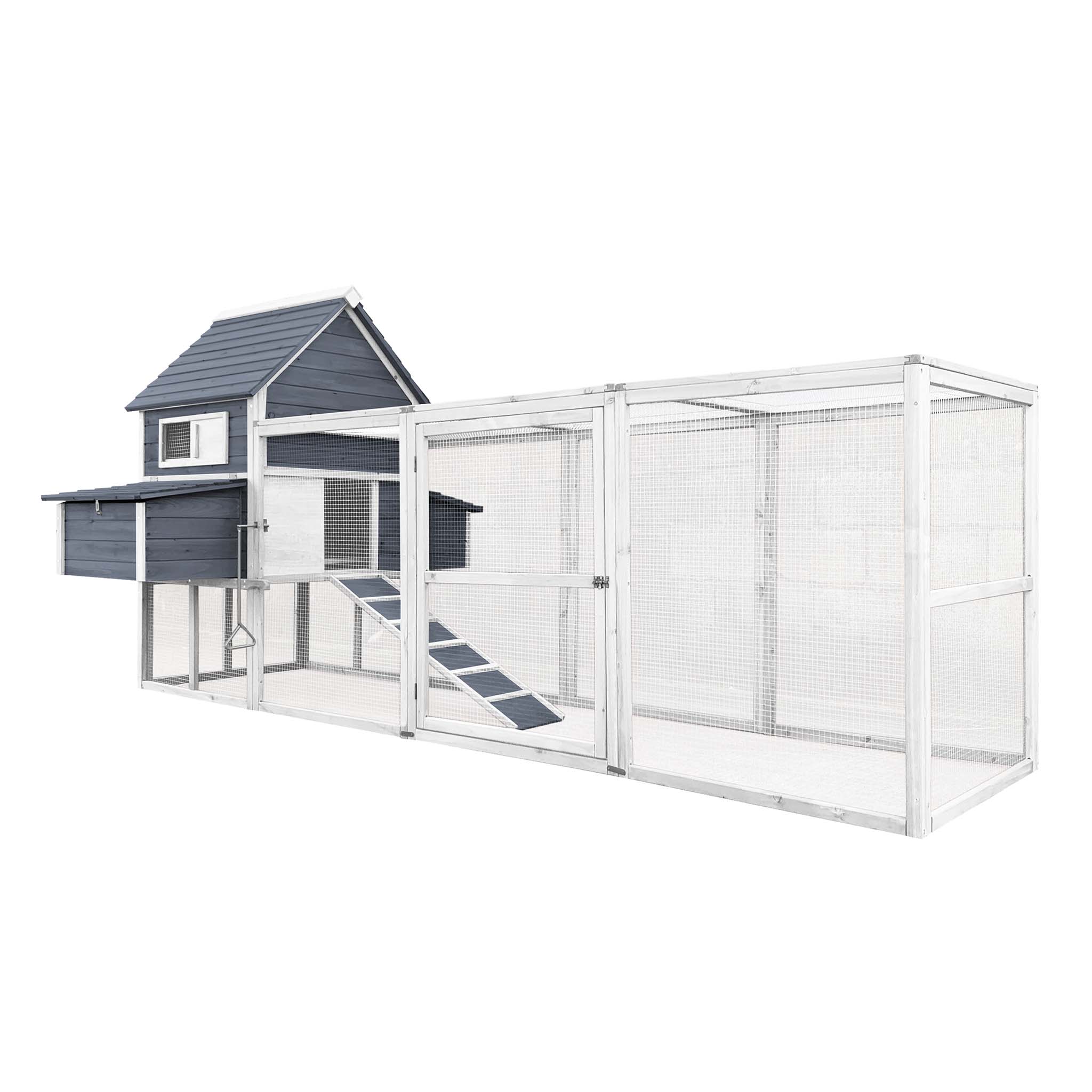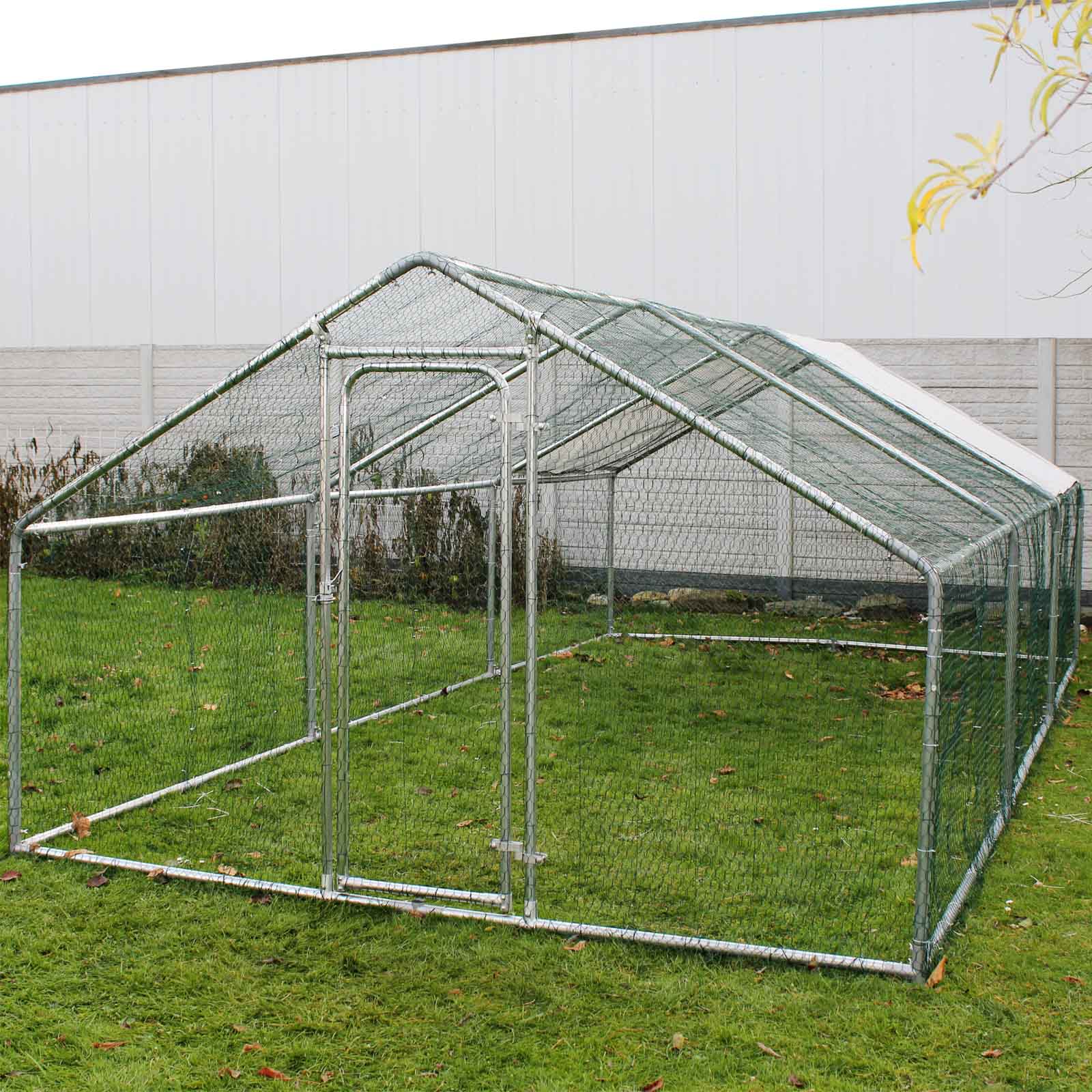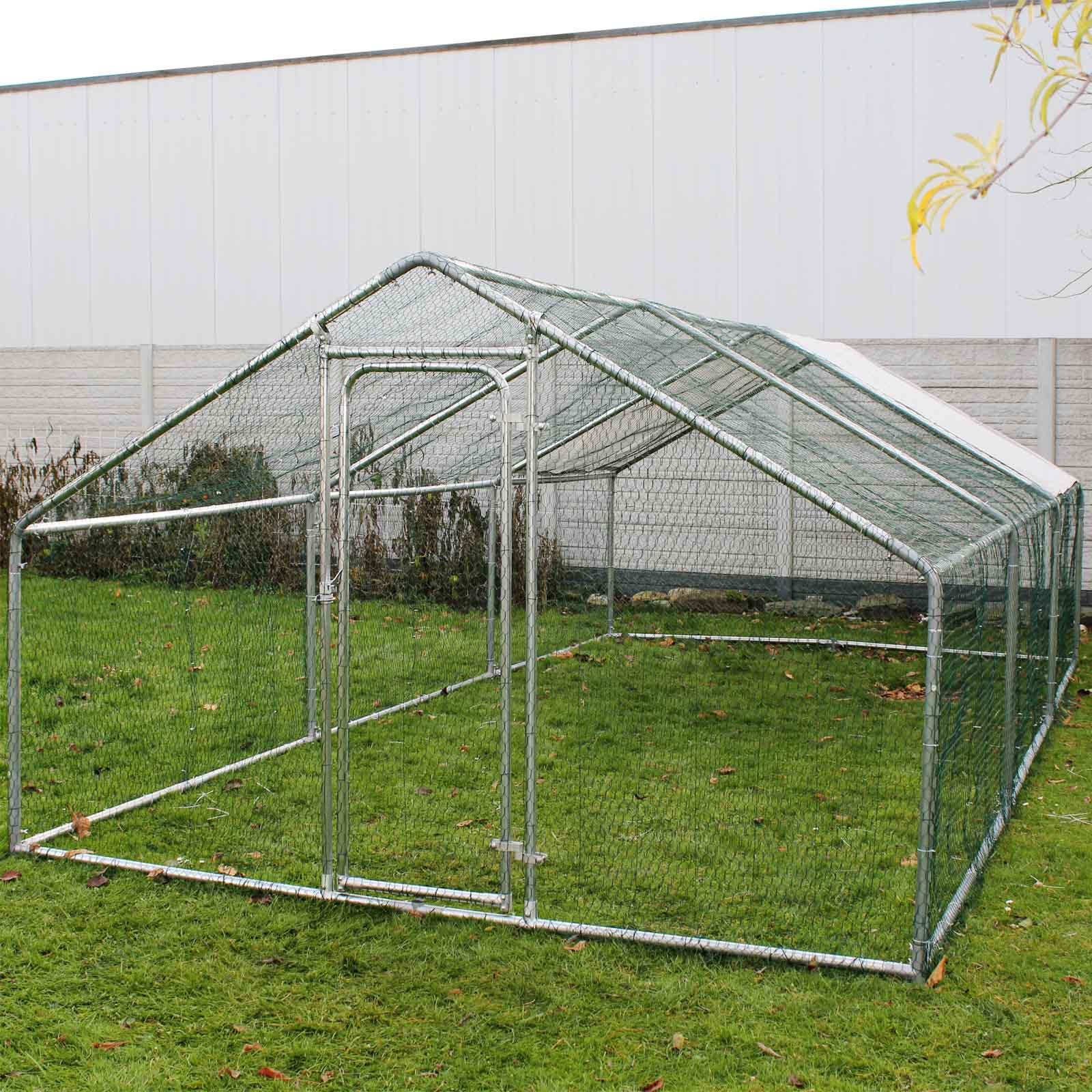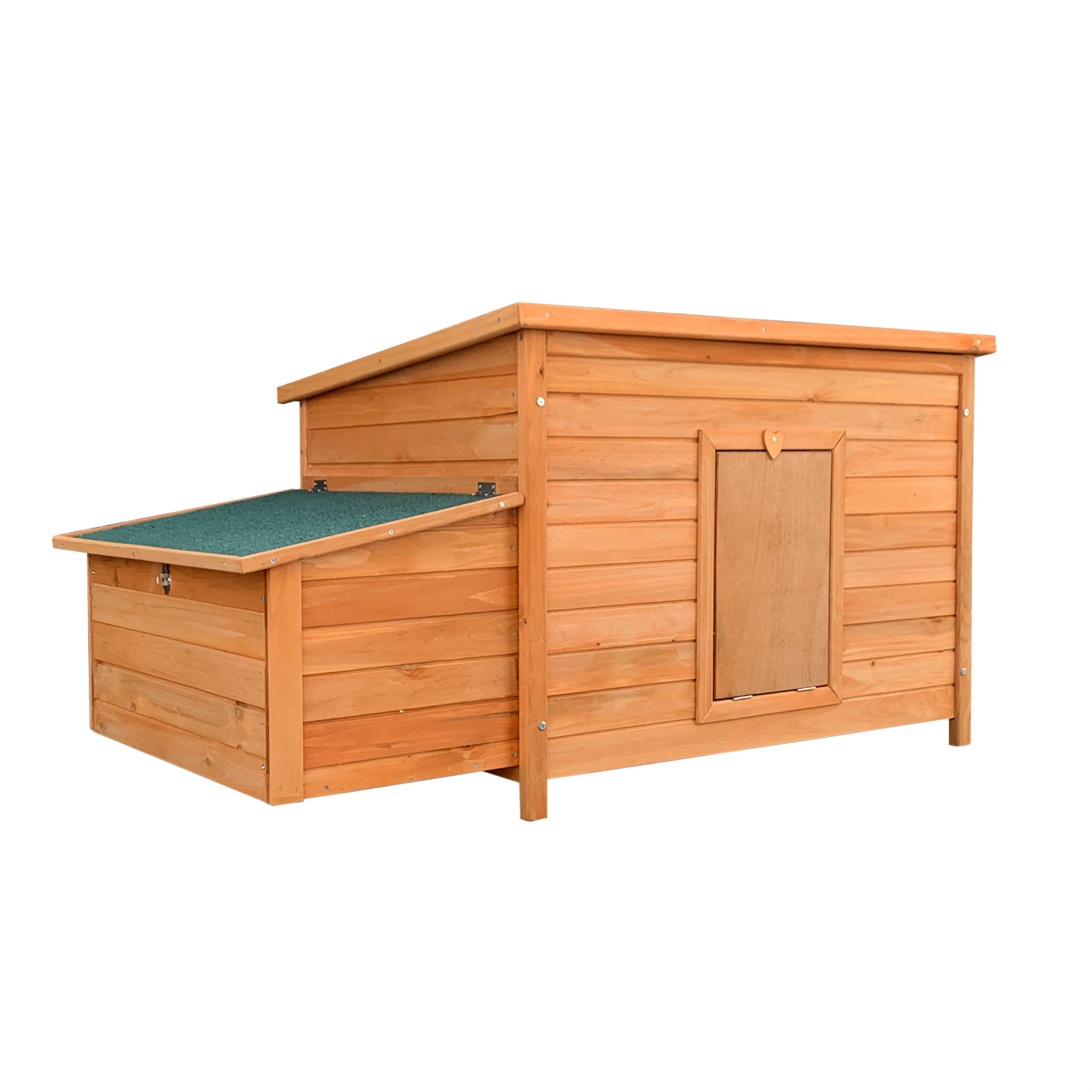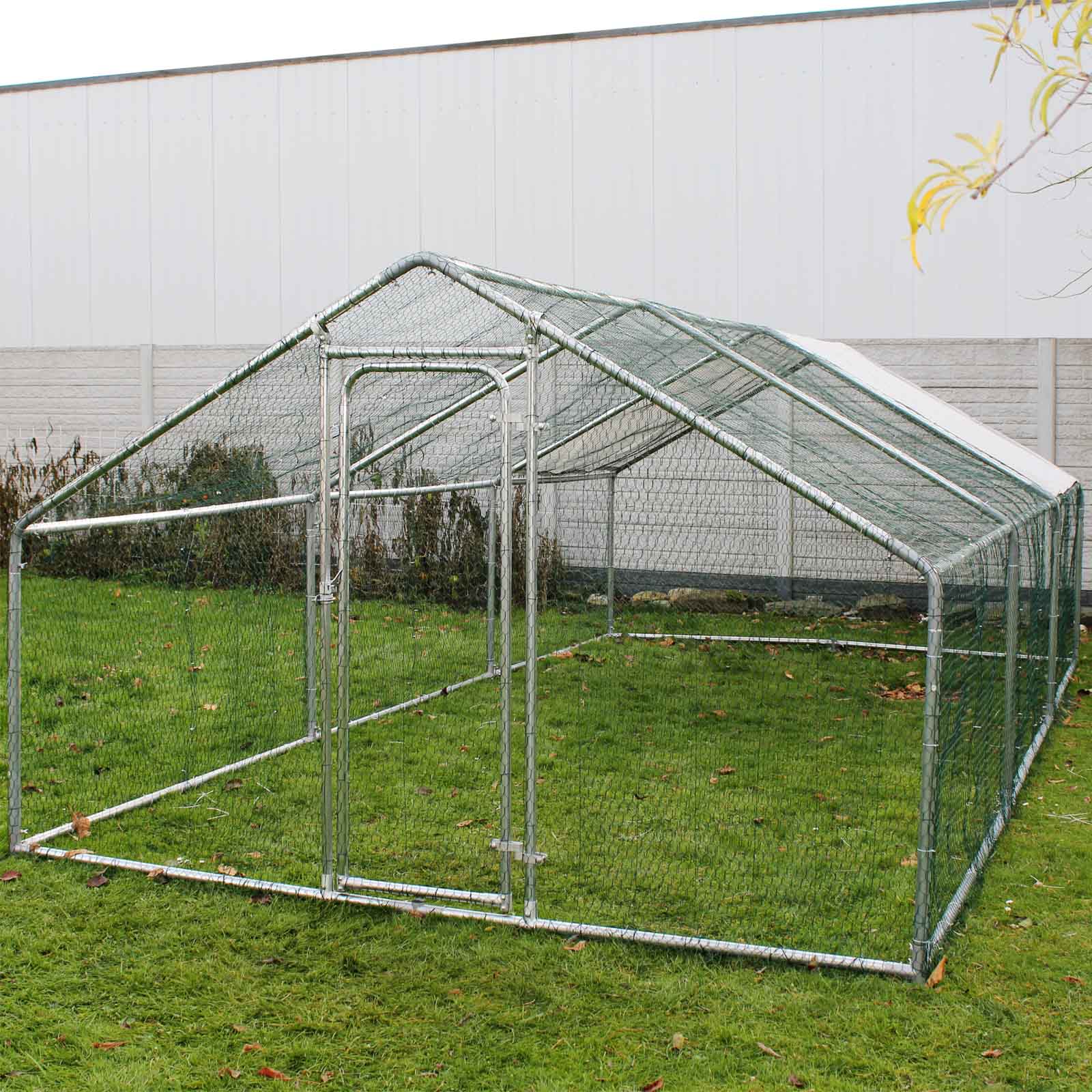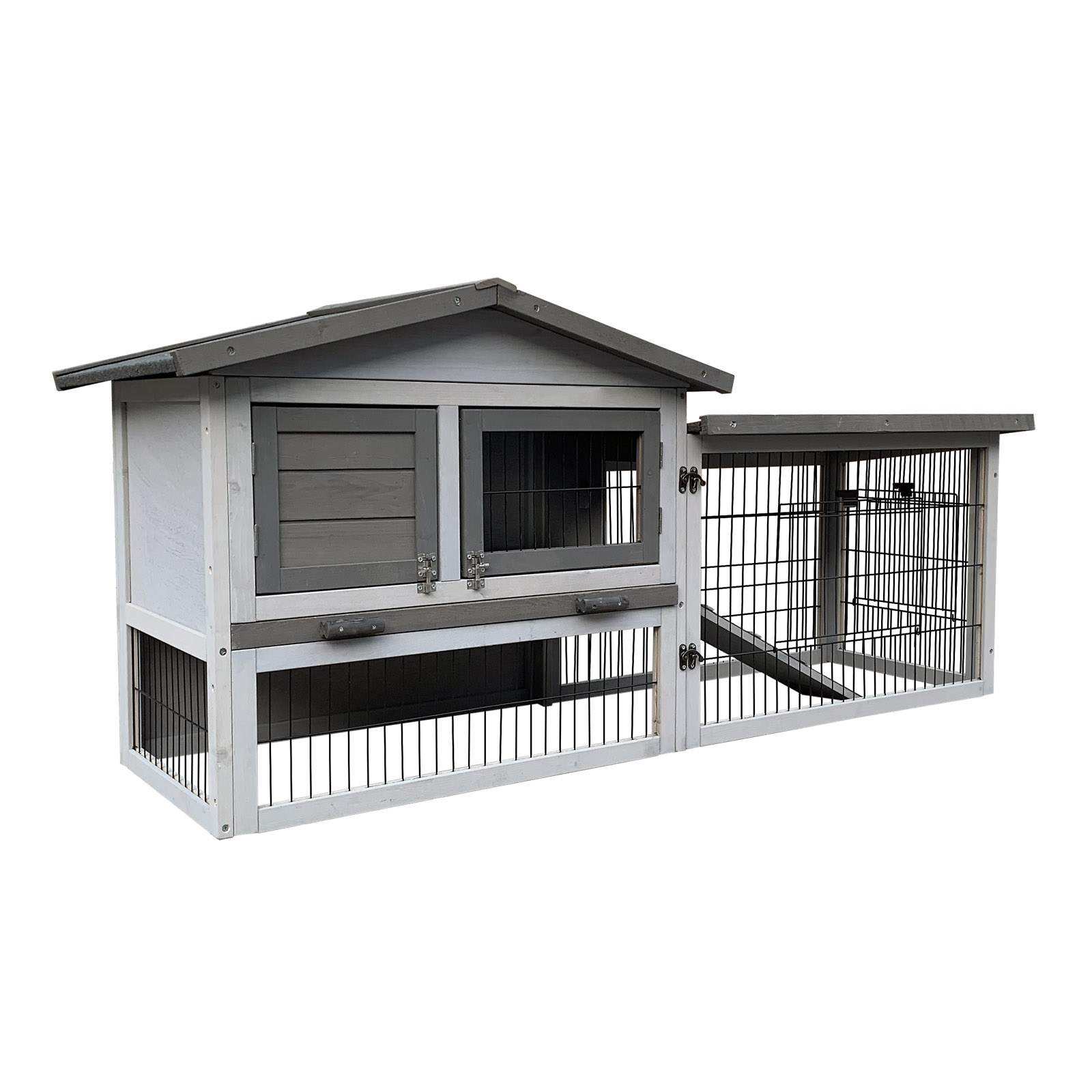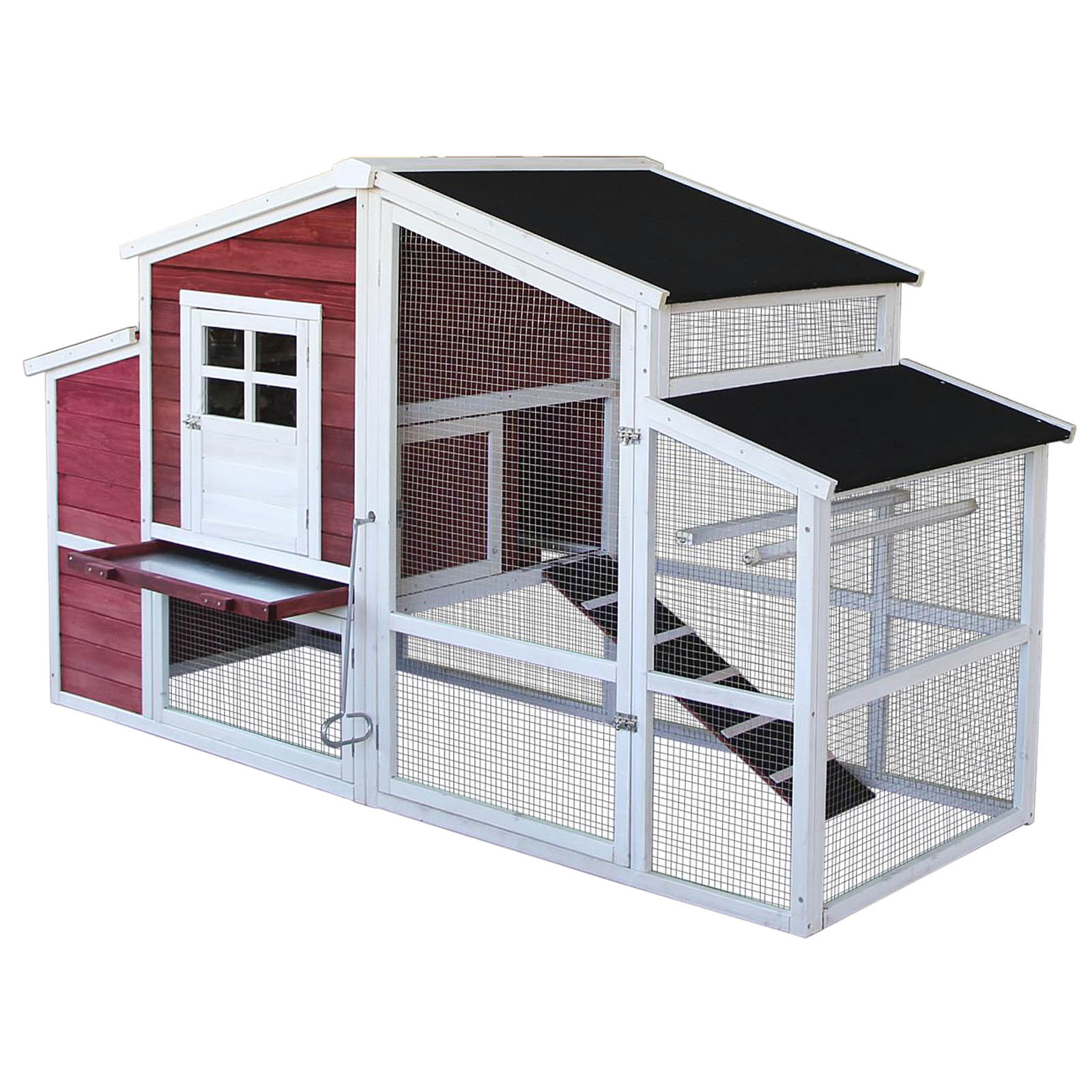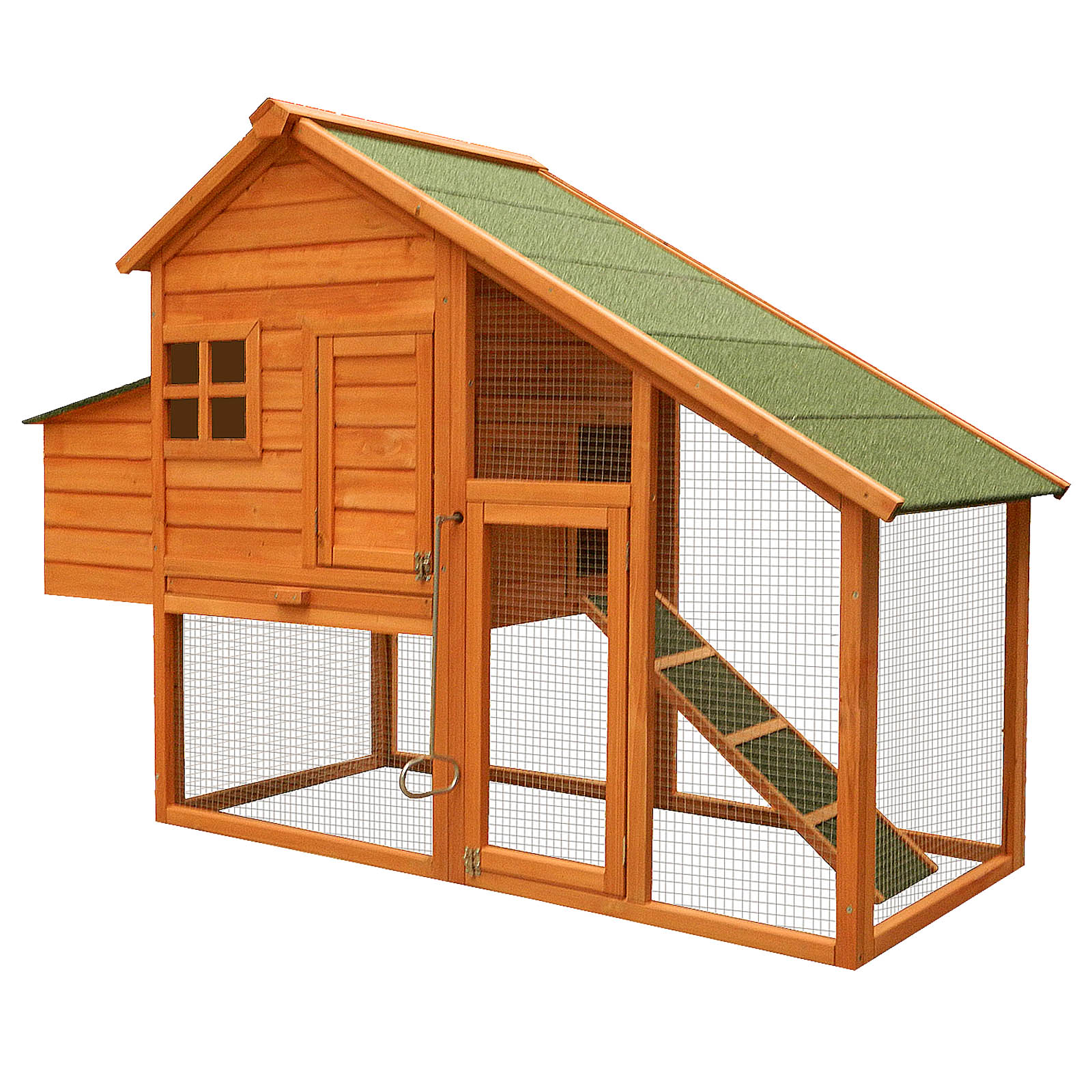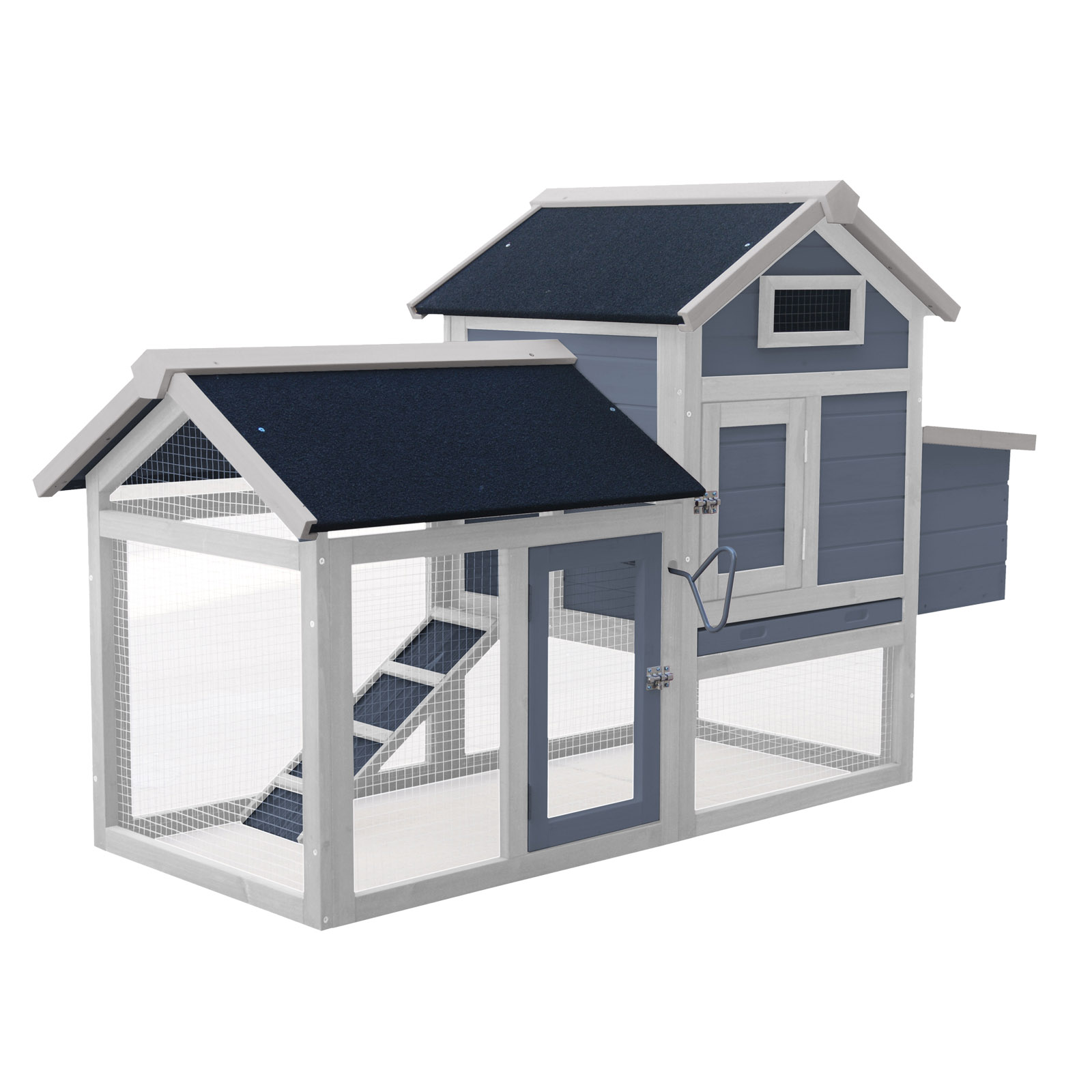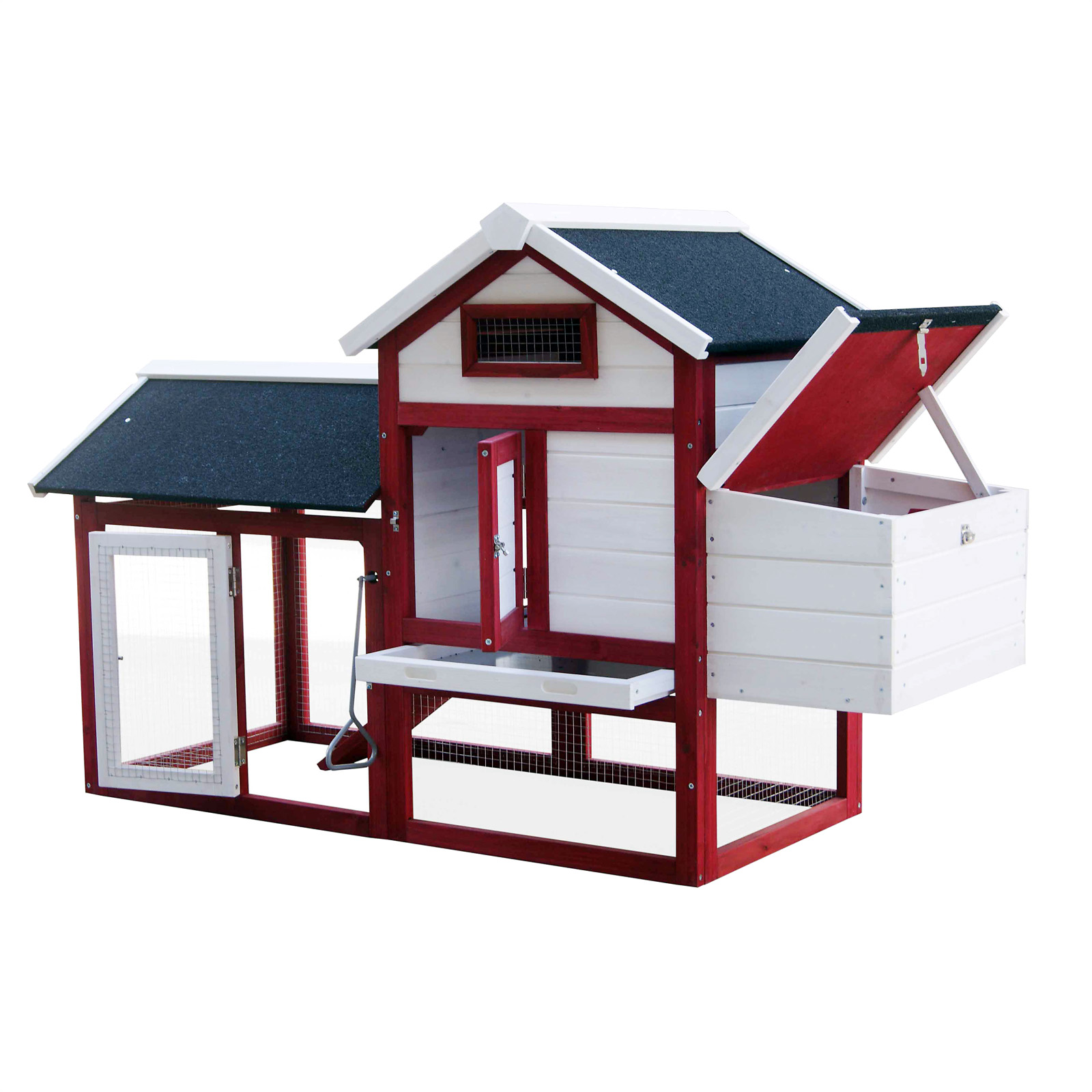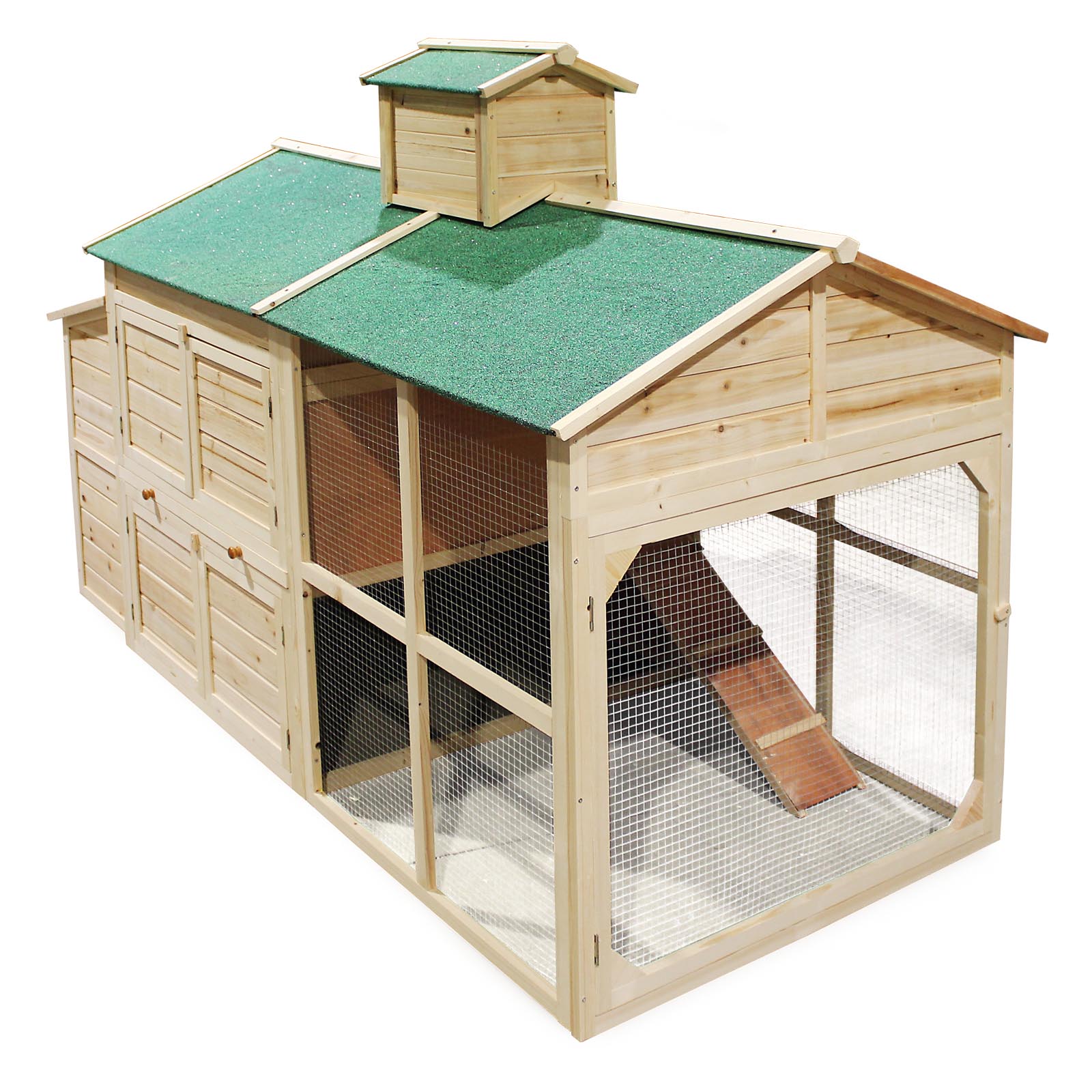Available, delivery time: 2 - 3 days
• Size: 310 x 150 x 150 cm
• Made of wood
• Two nesting boxes on the sides
• Pull-out tray for easy cleaning
Available, delivery time: 2 - 3 days
• Dimensions: 310 x 150 x 150 cm
• Made of wood with grey painting
• Two nesting boxes on the sides
• Slide-out tray for easy cleaning
Available, delivery time: 2 - 3 days
• UV-resistant and water-repellent sunshade
• Easy assembly
• Lockable latch
• Size: 6 x 3 x 2 m
Available, delivery time: 2 - 3 days
• UV-resistant and waterproof sunshade
• Easy assembly
• Lockable latch
• 2 m x 3 m x 2 m (LxWxH)
Available, delivery time: 2 - 3 days
• Dimensions: 136 x 74 x 70 cm
• Made of wood painted red-brown
• Entrance door can also be used as a ramp
• Roof with water-repellent coating
Available, delivery time: 2 - 3 days
• UV-resistant and
• waterproof sunshade
• Easy assembly
• lockable latch
• 4mx3mx2m
Available, delivery time: 2 - 3 days
• Size: 1535 x 525 x 685 mm
• Made of wood
in light grey
• Roof coated with bitumen
• Pull-out tray for easy cleaning
Available, delivery time: 2 - 3 days
• With outdoor enclosure
• Elevated hen house as shelter
• Dimensions: 2010 x 813 x 1165 mm
• Made of spruce wood
Available, delivery time: 2 - 3 days
• Elevated hen house as shelter
• Dimensions: 1720 x 660 x 1200 mm
• Made of spruce wood
• With nesting box included
Available, delivery time: 2 - 3 days
• Fir wood painted grey
• Open enclosure size: 1155 x 520 mm
• Nesting box with hinged roof
• Main house’s tray can be pulled-out
Available, delivery time: 2 - 3 days
• UV-resistant and water-repellent sunshade
• Easy assembly
• Lockable latch
• Can accommodate stables, etc.
Available, delivery time: 2 - 3 days
• Made of fir wood painted red and white
• Open enclosure size: 1155 x 520 mm
• Nesting box with hinged roof
• Main house’s tray can be pulled-out
Currently not available
• Dimensions: 195.5 x 108 x 144 cm
• Glazed and naturally colored
• Spacious outdoor enclosure
• Bitumen coated roof with small loft
Available, delivery time: 2 - 3 days
• UV-resistant and water-repellent sunshade
• Easy assembly
• Lockable latch
• Can accommodate stables, etc.
Available, delivery time: 2 - 3 days
• UV-resistant and water-repellent sunshade
• Easy assembly
• Lockable latch
• Can accommodate stables, etc.
Outdoor Hühnerställe für eine artgerechte Haltung
Outdoor Hühnerställe bieten die ideale Lösung für eine artgerechte Haltung auf Ihrem Grundstück. Bei uns können Sie den perfekten Hühnerstall kaufen, der Ihren Anforderungen entspricht. Durch die integrierte Hühnerklappe ermöglichen wir Ihren Hühnern einen bequemen Ein- und Ausgang.
Das großzügige Freigehege bietet ausreichend Platz für Bewegung und sorgt für eine artgerechte Haltung. Unser Hühnerstall für den Garten ist nicht nur funktional, sondern bietet auch ausreichend Schutz und Sicherheit. Schaffen Sie Ihren Hühnern ein liebevolles Zuhause mit unseren hochwertigen Outdoor Hühnerställen.
Hühner ein Zuhause schenken
Hühner ein Zuhause schenken – ein Traum vieler Naturliebhaber und Hobbygärtner. Mit einem passenden Hühnerhaus können Sie diesen Wunsch ganz einfach erfüllen. Bevor Sie sich jedoch für den Kauf entscheiden, sollten Sie einige wichtige Aspekte beachten. Die Haltung von Hühnern erfordert eine gewisse Verantwortung und Einhaltung bestimmter Vorschriften. Informieren Sie sich zunächst, ob Sie in Ihrer Region Hühner halten dürfen und welche Auflagen dabei zu beachten sind.
Bei der Planung des Hühnerstalls sollten Sie ausreichend Platz einplanen, damit Ihre Hühner genügend Bewegungsfreiheit haben. Ein Huhn benötigt in etwa vier Quadratmeter Auslauffläche. Bedenken Sie dabei auch den Platzbedarf für den Hühnerstall selbst. Ein guter Richtwert ist etwa 0,5 Quadratmeter Stallfläche pro Huhn.

Vorteile im Überblick
✓ Bauen Sie sich außen im Garten einen Hühnerstall auf, so ermöglichen Sie eine artgerechte Haltung Ihrer zukünftigen Hühner.
✓ Frische Eier direkt vor der Haustür – jederzeit verfügbar und von hoher Qualität.
✓ Sie wissen exakt, woher Ihre Frühstückseier kommen.
✓ Sie leisten einen nachhaltigen Beitrag zur eigenen Versorgung mit Lebensmitteln.
✓ Hühner im Garten sorgen für eine natürliche Schädlingsbekämpfung.
✓ Der Hühnermist kann als wertvoller Dünger für den eigenen Garten verwendet werden.
✓ Eine schöne Ergänzung zur Gartenlandschaft, die den Charme und die Natürlichkeit des Außenbereichs unterstreicht.
✓ Eine Möglichkeit, Kindern den verantwortungsvollen Umgang mit Tieren und die Bedeutung von Nachhaltigkeit zu vermitteln.
Stall oder Freilaufgehege: Was ist besser?
Die Entscheidung zwischen einem Hühnerstall mit Auslauf und einem Freilaufgehege hängt von verschiedenen Faktoren ab. Es gibt Unterschiede zwischen beiden Optionen, und die Wahl hängt von Ihren spezifischen Bedürfnissen und Gegebenheiten ab.

Ein Hühnerstall mit Auslauf bietet Ihren Hühnern einen geschützten Raum, der sowohl einen Stallbereich als auch einen angrenzenden Auslauf umfasst. Dieser Stall ist ideal für diejenigen, die ihre Hühner sicher und geschützt halten möchten. Der Stall bietet Schutz vor Raubtieren und schlechtem Wetter, während der Auslauf den Hühnern die Möglichkeit gibt, sich frei zu bewegen und frische Luft zu schnappen. Dies ist besonders wichtig, wenn Sie in einer Gegend mit vielen Raubtieren leben oder wenn Sie Ihre Hühner vor strengen Witterungsbedingungen schützen möchten.
Auf der anderen Seite bietet ein Freilaufgehege mehr Platz und Freiheit für Ihre Hühner. Es ist ein umzäunter Bereich, der Ihrem Geflügel erlaubt, sich frei zu bewegen und nach Herzenslust zu scharren und zu picken. Diese Option eignet sich besonders für Menschen mit einem größeren Garten oder einer ländlichen Umgebung, in der Raubtiere weniger präsent sind. Ein Freilaufgehege ermöglicht es den Hühnern, ihre natürlichen Verhaltensweisen auszuleben und bietet eine natürliche Umgebung.
Letztendlich hängt die Wahl zwischen einem Hühnerstall mit Auslauf und einem Freilaufgehege von Ihren individuellen Bedürfnissen und den örtlichen Gegebenheiten ab. Wenn Sie einen kleineren Garten haben oder in einer raubtierreichen Umgebung leben, kann ein Hühnerstall mit Auslauf die sicherere Option sein. Wenn Sie jedoch viel Platz haben und Ihren Hühnern mehr Freiheit geben möchten, ist ein Freilaufgehege die bessere Wahl. Denken Sie daran, dass Sie Ihre Hühner immer gut beobachten sollten, um sicherzustellen, dass sie sicher und glücklich sind, unabhängig von der gewählten Option.
Ein klassischer Hühnerstall
Ein klassischer Hühnerstall kann eine ideale Wahl für die Hühnerhaltung sein, unabhängig von der Größe des Hühnerbestands. Ob groß oder klein, ein gut ausgestatteter Hühnerstall bietet den Hühnern ein gemütliches Zuhause und sorgt für ihre Sicherheit und Wohlbefinden. Mit mehreren Etagen oder Abteilen können Sie den Raum optimal nutzen und den Hühnern verschiedene Bereiche zum Ausruhen, Fressen und Eierlegen bieten. Eine gut durchdachte Raumaufteilung ermöglicht es den Hühnern, ihre Hierarchie zu etablieren und ihre eigenen bevorzugten Ruheplätze zu finden.
Eine wichtige Ausstattung in einem klassischen Hühnerstall ist eine Hühnerstange. Diese erhöhte Sitzstange ermöglicht den Hühnern, sich während der Nacht sicher und bequem auszuruhen. Sie simuliert das natürliche Verhalten der Hühner, die gerne auf erhöhten Positionen schlafen, um sich vor möglichen Raubtieren zu schützen. Ein Stall schützt die Hühner vor Raubtieren und schlechtem Wetter und ermöglicht eine bessere Kontrolle über die Hühnerhaltung. Zudem erleichtert er die Reinigung und Wartung des Stalls.
Hühnergehege für mehr Platz
Ein Hühnergehege bietet Ihren gefiederten Freunden mehr Platz zum Ausleben ihrer natürlichen Bedürfnisse. Es eignet sich besonders für Hühnerhalter, die ihren Hühnern eine größere Bewegungsfreiheit ermöglichen möchten.
Die Vorteile eines Hühnergeheges liegen auf der Hand:
Durch den Zugang zum Freilaufgehege können die Hühner ausgiebig scharren, picken und nach Futter suchen. Dies fördert ihre Gesundheit und ihr Wohlbefinden. Zudem können die Hühner mehr Zeit im Freien verbringen und frische Luft und Sonnenlicht genießen. Der Aufbau eines Hühnergeheges kann etwas aufwendiger sein als der eines herkömmlichen Hühnerstalls. Es erfordert die Installation eines geeigneten Zauns oder einer Umzäunung, um die Hühner vor Raubtieren zu schützen und gleichzeitig sicherzustellen, dass sie nicht entkommen können
Durch den Zugang zum Freilaufgehege können die Hühner ausgiebig scharren, picken und nach Futter suchen. Dies fördert ihre Gesundheit und ihr Wohlbefinden. Zudem können die Hühner mehr Zeit im Freien verbringen und frische Luft und Sonnenlicht genießen. Der Aufbau eines Hühnergeheges kann etwas aufwendiger sein als der eines herkömmlichen Hühnerstalls. Es erfordert die Installation eines geeigneten Zauns oder einer Umzäunung, um die Hühner vor Raubtieren zu schützen und gleichzeitig sicherzustellen, dass sie nicht entkommen können
Wo den Hühnerstall am besten platzieren?

Der Hühnerstall sollte an einem geeigneten Standort platziert werden, der verschiedene Aspekte berücksichtigt. Ein zentraler Punkt ist, dass der Stall leicht zugänglich sein sollte, vor allem für die tägliche Fütterung und Reinigung. Ideal ist es, den Hühnerstall in Sichtweite des Hauses zu platzieren, um schnell darauf zugreifen zu können und eventuelle Probleme sofort zu bemerken.

Ein weiterer Faktor ist die Verfügbarkeit von Auslauf für die Hühner. Ein Hühnerstall ohne Freilauf Möglichkeit sollte in unmittelbarer Nähe über ein Auslaufgehege verfügen, um den Hühnern genügend Platz zum Scharren, Picken und Herumlaufen zu bieten. Dabei ist es wichtig, darauf zu achten, dass der Auslauf sicher eingezäunt ist, um Raubtiere fernzuhalten.

Der Standort im Garten sollte gut durchdacht sein. Der Hühnerstall sollte vor starkem Wind und Regen geschützt sein und ausreichend Sonnenlicht erhalten, um ein gesundes und komfortables Umfeld für die Hühner zu gewährleisten. Zudem sollte der Standort leicht zugänglich für die Reinigung des Stalls und den Transport von Futter und Wasser sein.
Zusammenfassung
Hühnerhäuser sind die perfekte Lösung für eine artgerechte Haltung von Hühnern im Freien. Mit einem Hühnerstall im Außenbereich können Sie Ihren gefiederten Freunden ein komfortables und sicheres Zuhause bieten. Diese robusten Hühnerhäuschen sind speziell für den Outdoor-Einsatz konzipiert und bieten ausreichend Platz für Ihre Hühner, um sich frei zu bewegen.
Sie sind in verschiedenen Größen und Ausführungen erhältlich und können an die Bedürfnisse Ihrer Hühner angepasst werden. Ein Hühnerstall im Freien ermöglicht es Ihren Hühnern, frische Luft und Sonnenlicht zu genießen, während sie vor Raubtieren geschützt sind. Die Hühnerhäuschen sind gut isoliert und bieten den Hühnern Schutz vor schlechtem Wetter. Sie sind auch mit praktischen Funktionen wie Sitzstangen und Eierlegern ausgestattet, um den Komfort und die Produktivität Ihrer Hühner zu fördern. Investieren Sie in ein hochwertiges Hühnerhäuschen und schenken Sie Ihren Hühnern ein gemütliches Zuhause im Freien.


